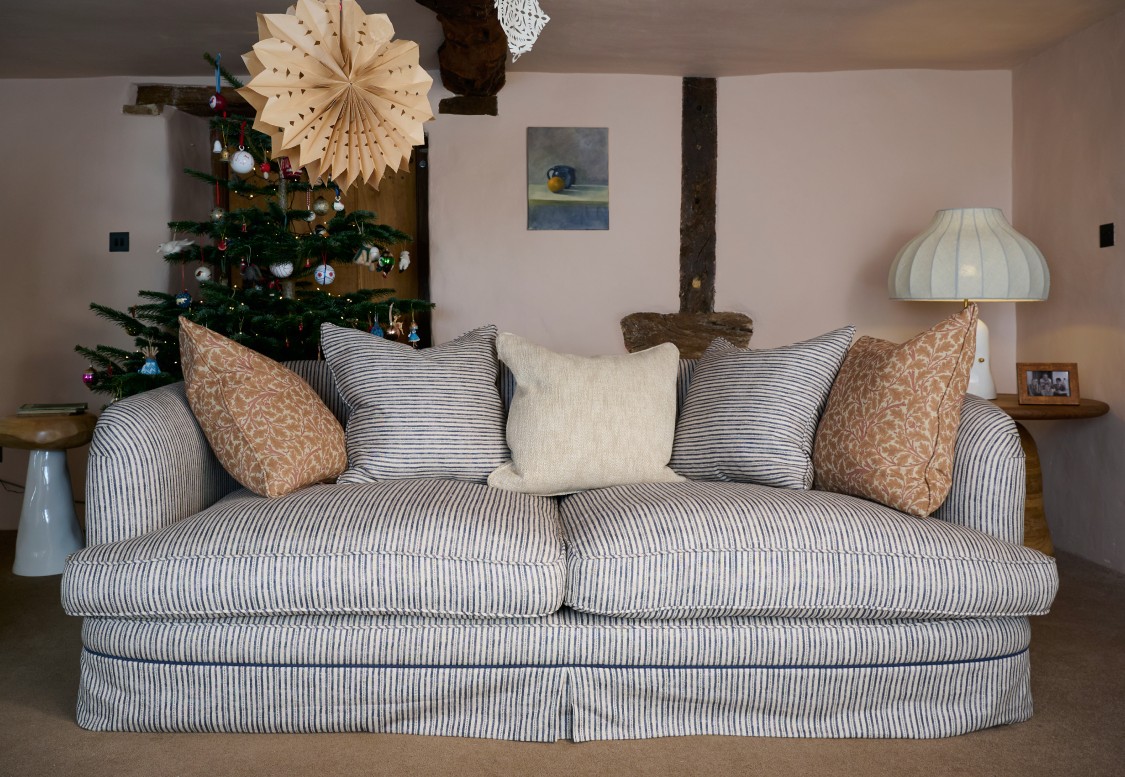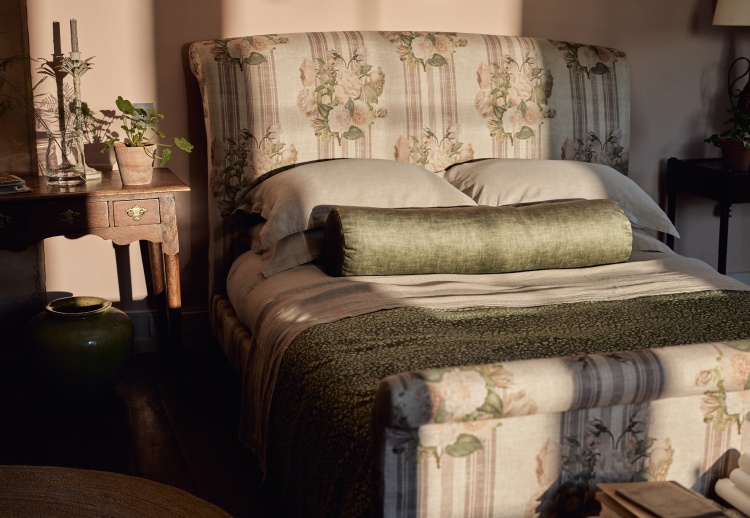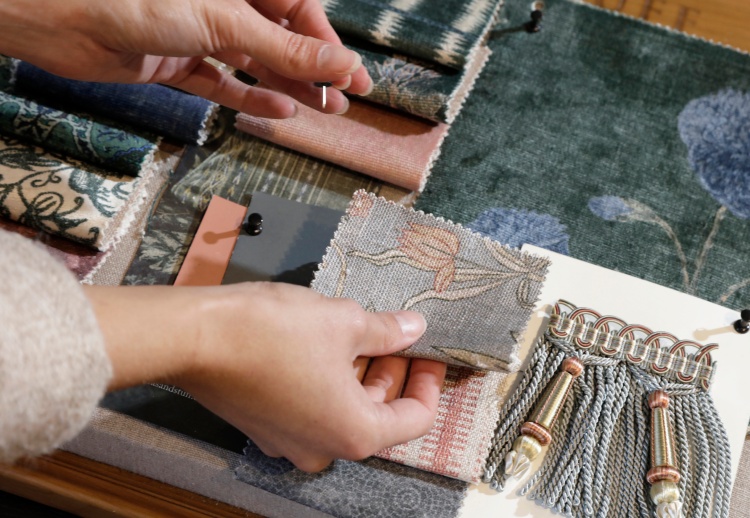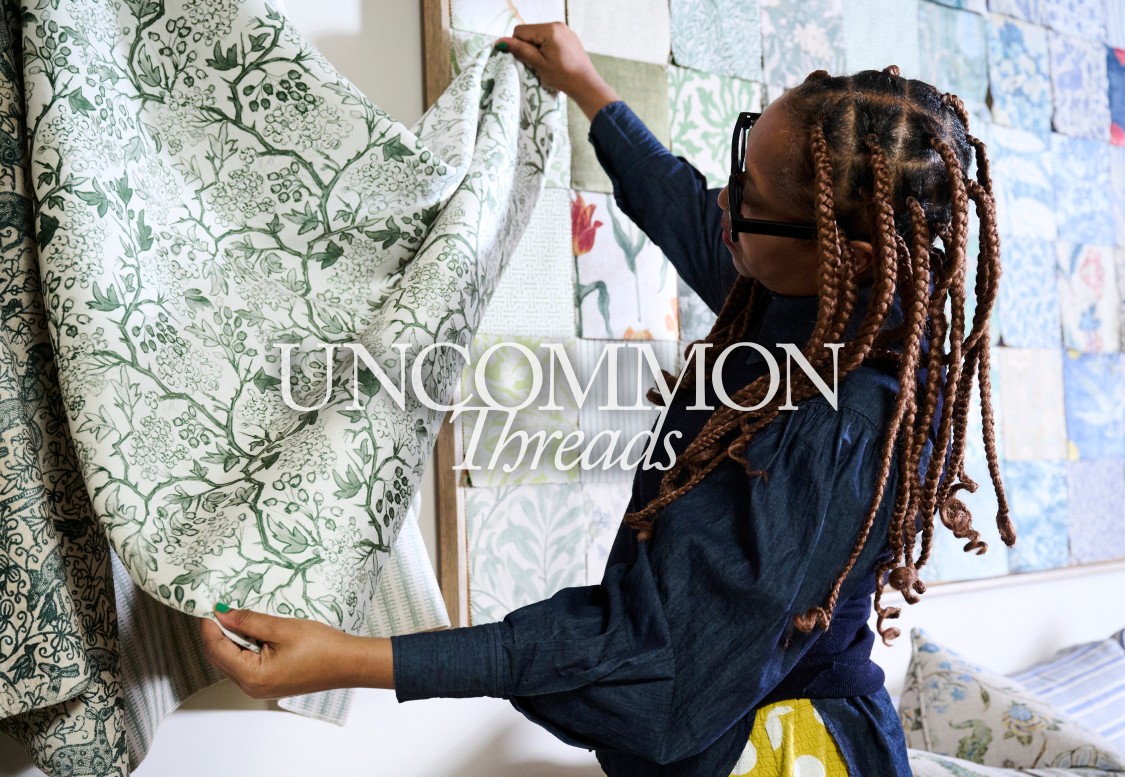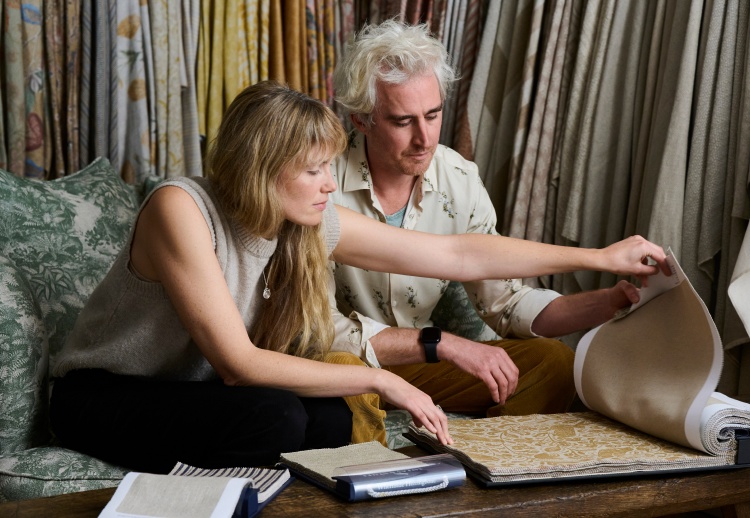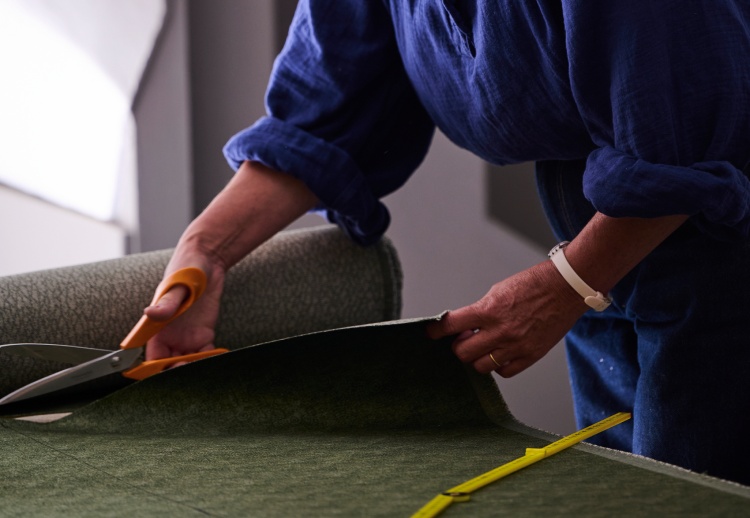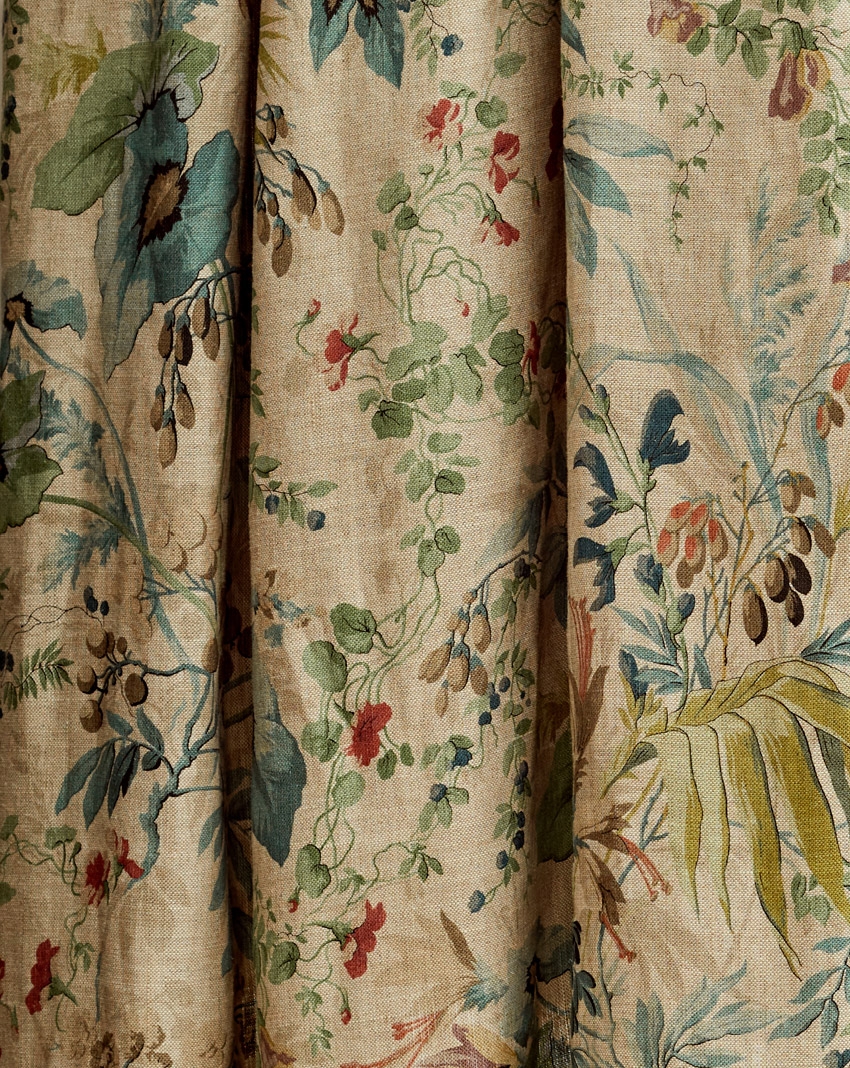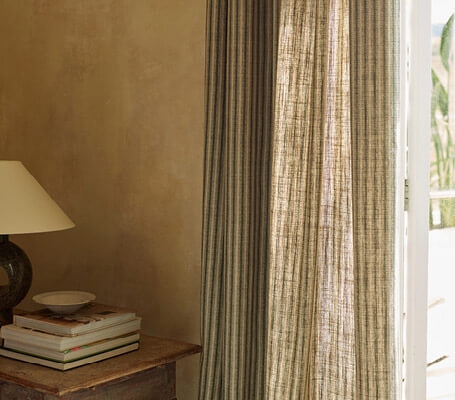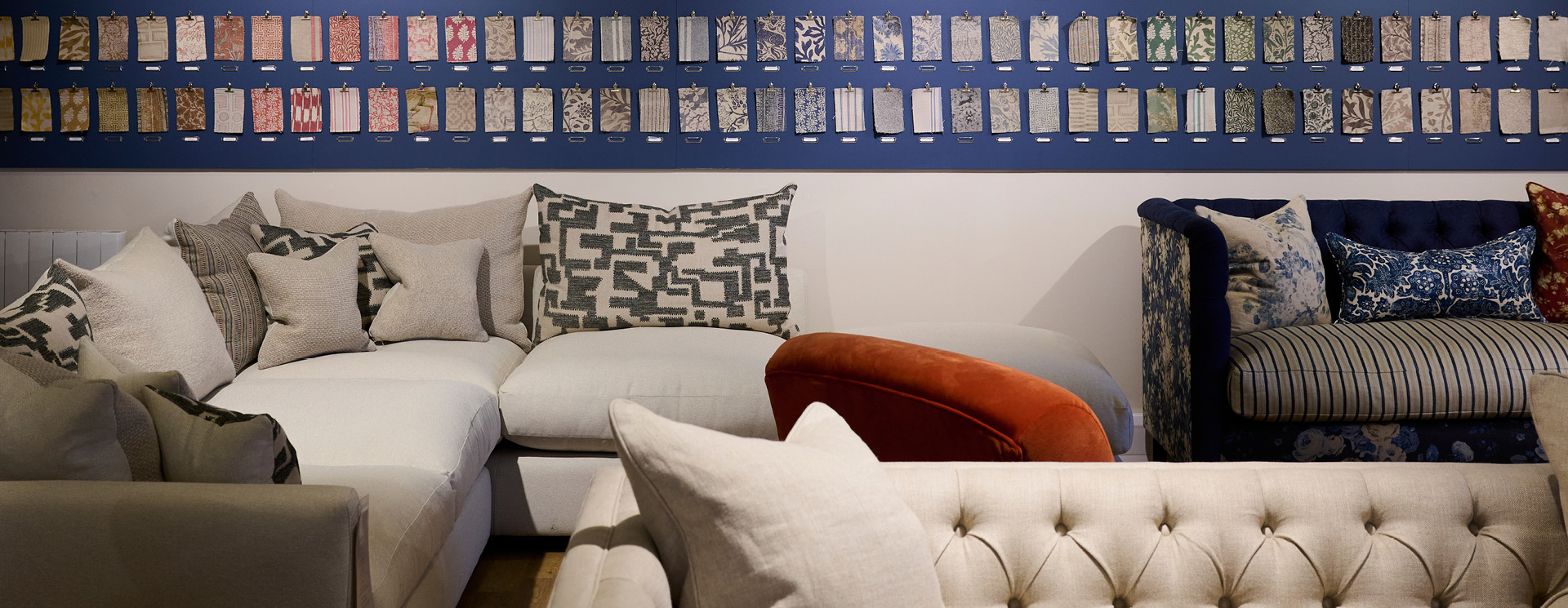We now sell our stunning exclusive fabrics by the metre online and via our showrooms. Each elegant print can only be found at Sofas & Stuff, ensuring your home is as individual as you are. These fabrics are just wonderful for a range of soft furnishings and upholstery projects.
Whether you select from our collaborations with the Royal Horticultural Society (RHS) or V&A, or prints by Sofas & Stuff founder Andrew Cussins, you are sure to find something distinctive and unique for your home. You can browse our full range of ready-to-buy fabrics here.
Fabric measuring guide for soft furnishings projects
The following information serves as general guidance for taking fabric measurements. We strongly recommend consulting a professional curtain maker or upholsterer for tailored advice specific to your project. Our team at the Bury St Edmunds showroom is available to assist with questions regarding measuring, calculating fabric requirements, and even providing quotes for making the curtains. For enquiries, please contact us at [email protected]. For further recommendations, please contact your local showroom.
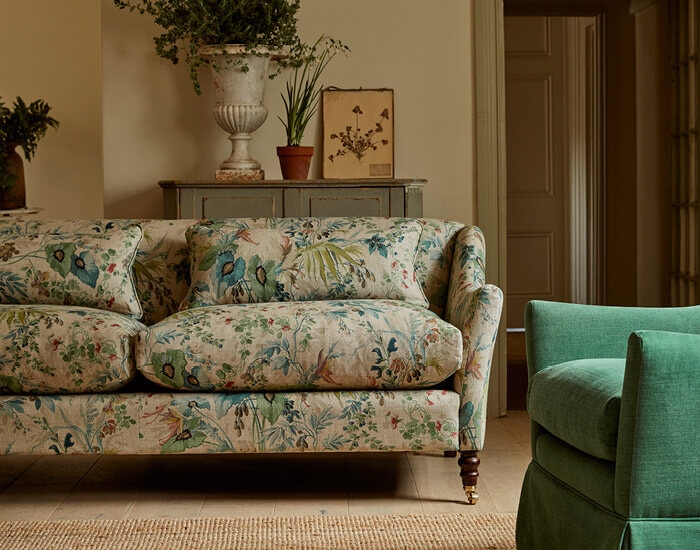
Bring beautiful Sofas & Stuff fabrics into your home
Measuring for fabric requirements: what you’ll need
To begin with, consider how you’d like to use your fabric. Will you be sewing some curtains to match your sofa upholstery, or perhaps some scatter cushions in a contrasting shade or pattern?
Once you’ve settled on your project, prepare for measuring by gathering the below utensils according to your needs:
- A tape measure. We recommend a metal tape measure for curtain or blind measurements and a soft tape measure for scatter cushions
- A notebook and pen, to jot down your measurements
- A calculator, for any quick calculations
- A step ladder for high measurements (such as curtains or blinds)
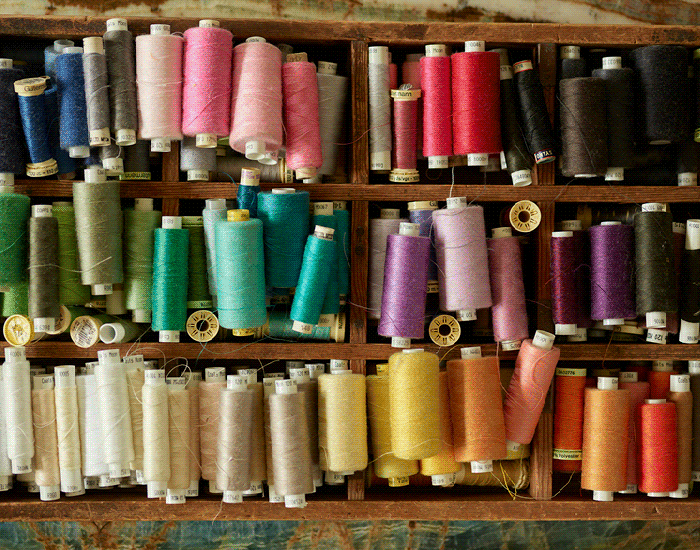
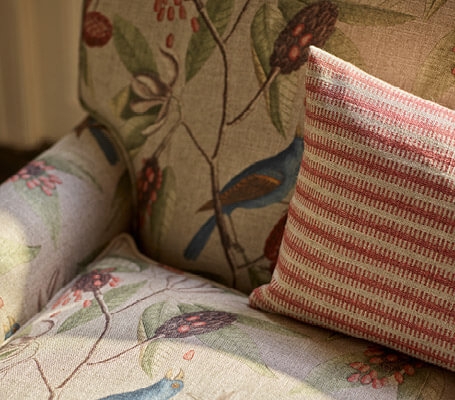
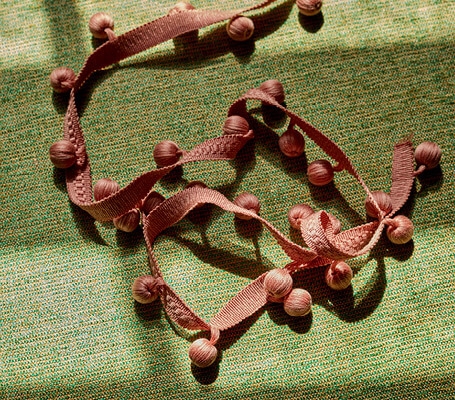
How to measure fabric for curtains or drapes
1. Measuring width
You’ll need to start by measuring the fabric width you require, using your tape measure. Before you begin, give some consideration to the look you wish to achieve; in particular, the intended fullness of your curtains when closed.
If you have a curtain pole, measure the full pole width excluding any end finials. If you have a curtain track, measure the full width from one end to the other. For tracks with an overlap, measure both sides and add the measurements together.
You will then need to allow for the extra fullness in your fabric width. This will depend on:
- How much you would like your curtains to overlap by when closed
- Whether you would like the outside edges of your curtains to turn back from the pole or track to the wall, preventing any light from shining through
For a standard overlap, a leeway of 6–8 cm per curtain is generally recommended, but you may choose to make curtains which are x1.5 or even x2 the fullness of the measured width. In these cases, a quick calculation will give you your finished width.
If you wish for your curtains to return to the wall*, measure the distance from your curtain rings or gliders to the wall on both sides and add these measurements to the width.
*This is generally only recommended if your window is at least 10 cm narrower than your curtain rail, as your curtains need sufficient ‘stack width’ and may otherwise block light from your window when open.
2. Measuring length
Before measuring for length (known as the ‘drop’), first decide the look you would like for your curtains: sill length (0.5-1 cm above the sill), below sill (15 cm below the sill) or floor length (1 cm from the floor), and the heading (such as tab top, eyelet or pencil pleat).
The length of your curtains will be from the top to the bottom hem. Always measure for length to the left, centre and right-hand side of your curtain pole or track, using your tape measure, and choose the length that suits best if there is variation.
Measuring for length will be slightly different depending on the heading you would like for your curtains:
Tab top headings (only for curtain poles):
Measure from the top of your pole to your desired hem position. Once you have done this, measure the diameter of your pole and add this on top of your drop measurement for your required length.
Eyelet heading (only for curtain poles):
As usual, measure from the top of your curtain pole to the bottom hem position. For the finished length, add 3.5 cm (1.38”) to this amount, which is the amount of curtain required above the eyelet hole.
Gathered and pencil pleat headings:
Gathered curtains also allow for 3.5 cm (1.38”) of height above the hook position. Add this to the measurement from the eyes of your rings or gliders to the required bottom hem position for the final length measurement.
3. Pattern repeats
With our patterned fabrics, you will need to keep in mind the pattern repeat. This is the amount of space (usually in inches) before a pattern repeats again.
We have provided information for the pattern repeat of each of our fabrics, which you should add to your length measurement. You may find you are left with some leftover fabric by this method which you can use in other sewing projects – such as curtain tie-backs.
4. Measuring with no pole or track in place
You may wish to measure your curtains before you have fitted your pole or track in place. Although we would recommend installing your pole or track first if possible, you can still estimate your curtain measurements.
First, decide what type of pole or track you will use. Then decide where you will fix it to the wall above your window. Generally, a leeway of at least 15-20 cm (6–8”) to the sides of your window and 8–10 cm (3–4”) above your window soffit is sufficient.
You can then measure your curtains by following the steps above. Making small pencil marks on your wall will help you visualise the width and length.
How to measure fabric for blinds
1. Fitting inside your window reveal
First, make sure there are no obstructions, such as handles, which would prevent this look for your blinds.
Measure from the top of your window reveal to the sill. To account for your window’s shape, which might not be completely square, take this measurement in multiple places and choose the measurement that suits best.
At the narrowest point of your reveal, measure for width and then subtract 1 cm from this entire measurement. This will leave clearance for 5mm on either side.
2. Fitting outside your window reveal
Consider your preferred positioning for the blinds. For example, 10–20 cm above at the top, 5 cm on either side and 5–15 cm below the sill (or to a sill if it projects).
Then, measure the length between the intended top of your blinds and the bottom hem, measuring in various places to find the best-suited measurement.
Measure the width of your window reveal, from one side to the other. Decide by how much you would like your blinds to overlap at the sides – usually around 5 cm, if there are no obstructions – and add this measurement to your reveal width.
3. Calculating the pattern repeat
If you wish to, you can calculate the pattern repeat manually. To do this:
- Divide the drop length by the pattern repeat length and round up to the nearest whole number.
- Multiply the pattern repeat by this whole number, giving you your drop cut measurement.
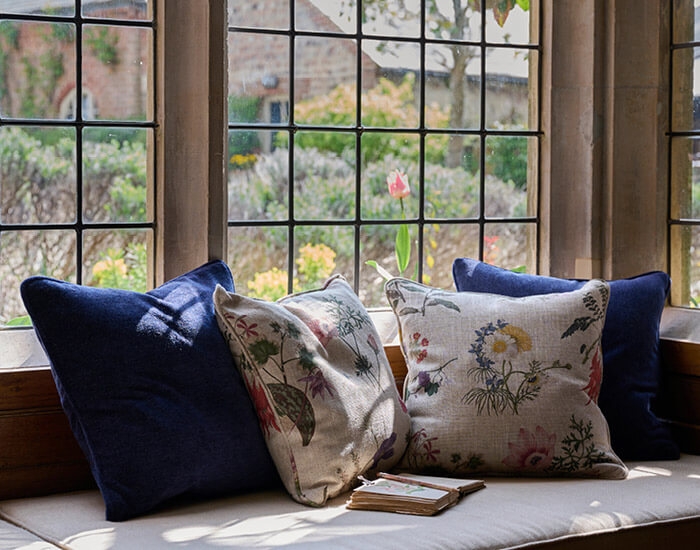
How to measure fabric for scatter cushions
The below fabric sizing guide is for measuring pillow inserts for cushion cover fabric requirements.
- Give your pillow a good fluff and plump, making sure the fill is evenly distributed. This will ensure your cover is the perfect size, rather than looking baggy or oversized.
- Take your measuring tape and measure from underneath the pillow, encircling it around the whole cushion. Find a snug balance between loosely and tightly wrapping the tape measure.
- Dividing this measurement in two will tell you your fabric measurements for each side of your scatter cushion cover. Add an allowance of 5 mm for each side.
How to measure fabric for a chair seat cover
The below instructions will guide you through measurements for a chair cover reupholstery project, such as a dining chair.
- If possible, use the existing seat cover to act as a measurement guide for how much fabric you will need for reupholstery. To do this, remove the existing fabric using a staple remover. This fabric may be folded over around the edges (usually twice), so be sure to iron it out flat for accurate measurements.
- Alternatively, to measure your seat cover, first remove the seat from the chair.
- Using your tape measure, measure the length of the seat from top to bottom from the edges. To allow for the fold-over finish and stapling, add another 8–10 cm (3–4”) to both sides.
- Measure the width of your seat in the same way, at the seat’s widest point. Again, at another 8–10 cm (3–4”) to your measurements to allow for folding over and stapling.
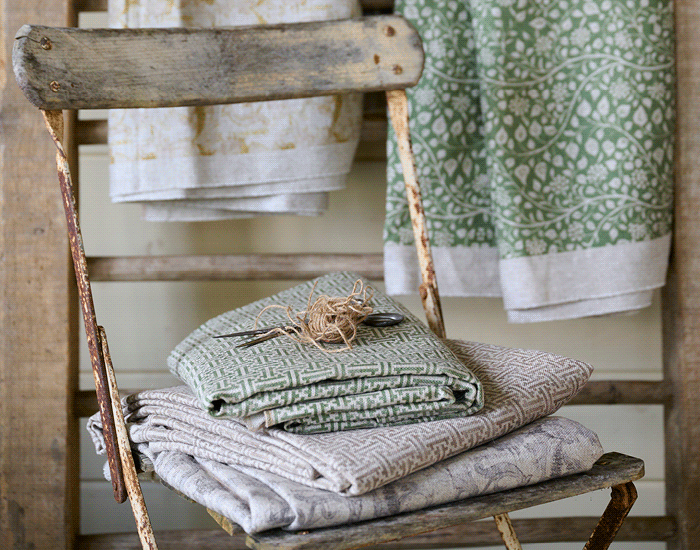
Visit our showroom for more advice and assistance
The Sofas & Stuff design consultant teams are ready to help you find the perfect fabrics to begin your home furnishing projects. Simply pop into your nearest showroom for personalised advice and a wealth of fabric expertise.

